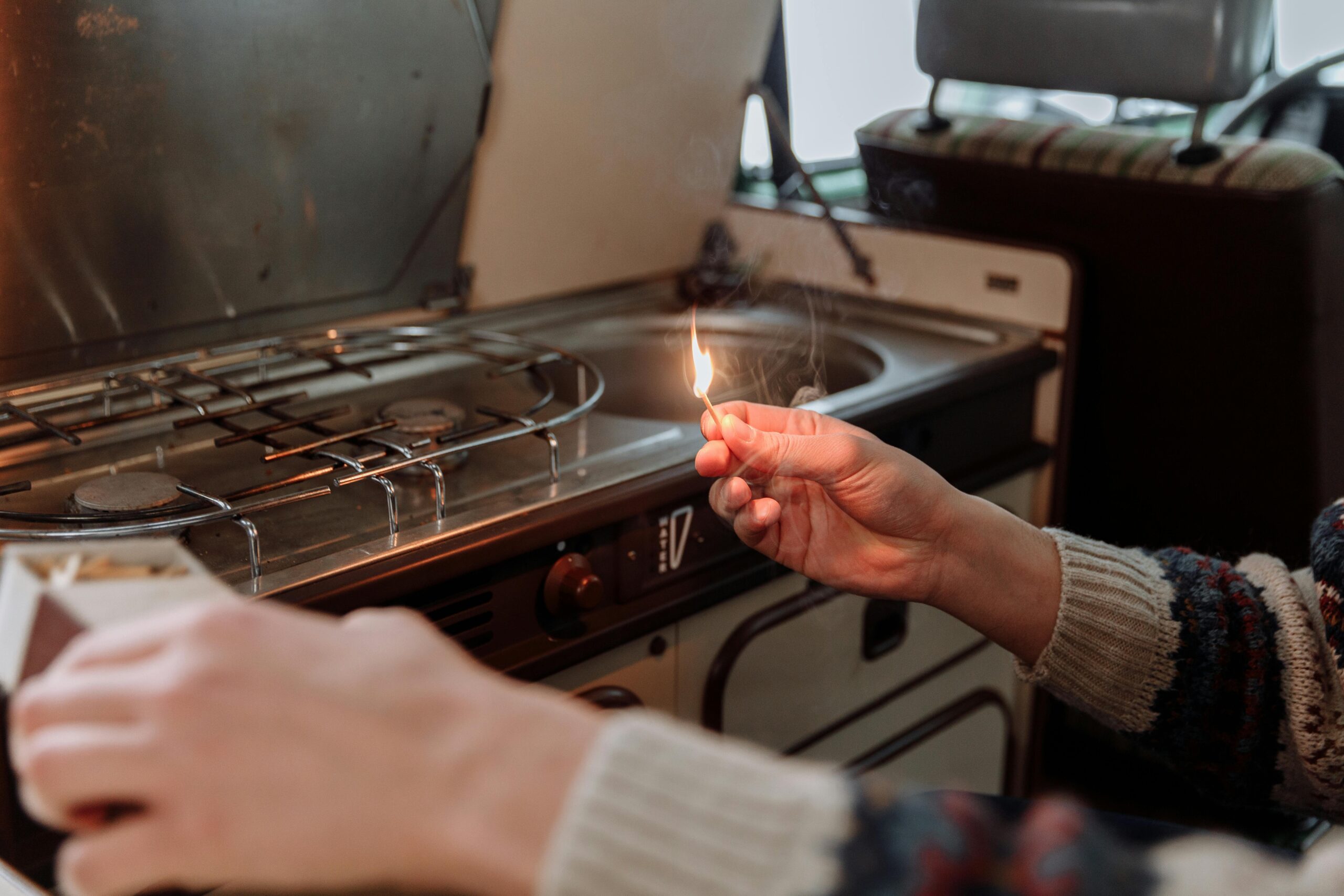Hiking Safety: Essential Tips for a Safe and Enjoyable Adventure

Hiking is a fantastic way to connect with nature, stay active, and explore the outdoors. Ireland’s mountains are not particularly high by global standards, and severe snow and ice are rare, but they should still be approached with caution. Even experienced and well-prepared walkers can face challenges, as conditions can change rapidly, especially due to the area’s proximity to the Atlantic. Navigation can also be tricky due to a lack of clear paths and tracks.
Whether you’re a seasoned hiker or a beginner, prioritising safety is essential for a successful trip. From proper preparation to situational awareness, the following guidelines will help you stay safe while enjoying your hiking adventures.
1. Plan Your Route in Advance
The ability to navigate accurately in all conditions, especially low visibility and varied terrain, is the most important skill for any hillwalker or mountaineer. Good navigation is not mysterious—it just requires practice, and there are many high-quality mountain skills courses available, taught by experienced instructors. Despite this, many walkers still lack proper map and compass skills, and navigational errors are the leading cause of incidents that result in Mountain Rescue callouts.
Before setting out, research your chosen trail thoroughly. Know its difficulty level, distance, and expected duration. Check for trail closures or weather-related advisories and make sure the trail aligns with your fitness and skill level. It’s also wise to carry a printed map or download an offline trail map, as mobile reception may be unreliable.
To make the most of your day in the mountains, it’s essential to plan your route in advance. Consider the following factors:
- The distance, elevation gain, and time required for the route
- The amount of daylight available and your estimated return time
- The size, fitness, and experience of your group
- The nature of the terrain and potential conditions, such as ice
- Possible escape routes
- The weather forecast and alternative plans for poor weather
You may decide to prepare a detailed route card, but at the very least, inform someone about your route and estimated return time. Don’t forget to notify them when you’re safely back! If you’ve shared your planned route, stick to it unless it becomes unsafe.
When choosing your route, avoid obvious hazards like clifftops in windy weather or icy slopes. Also, be aware of less obvious risks, such as grassy slopes or lichen-covered rock slabs, which can be just as dangerous, especially when wet. Always consider the risk of slipping and its potential consequences, as slips are responsible for many serious mountain accidents.
On slopes where rocks may be dislodged, keep your group close together to stop rocks from gaining momentum. Be mindful of the risks posed to others below you and by groups above you. If a rock is accidentally dislodged, shout “Below!” to warn others.
We advise against building or adding to cairns (rock piles used as markers). Not only are they unsightly, but they can mislead inexperienced walkers into venturing further into the mountains with a false sense of security. Instead, we encourage beginners to take a navigation course or join one of Ireland’s many hillwalking clubs, which offer guided walks and training. These clubs cater to all skill levels and often include navigation training.
For information on clubs and approved courses, visit the MCI website at www.mountaineering.ie.
2. Check the Weather
With the weather being more unpredictable than ever, it’s crucial that you check the weather forecast before venturing out. Check the forecast for the area you’ll be hiking and dress appropriately. Avoid hiking during severe weather conditions like thunderstorms, extreme heat, or heavy snowfall.
Ireland’s location near the Atlantic means its mountains can experience intense storms, sometimes more extreme than those found in larger mountain ranges elsewhere.
Wind speeds increase with altitude and can be one of the most dangerous elements for hillwalkers. At times, winds can be strong enough to knock people off their feet. In such conditions, the best advice is to avoid venturing into the hills.
Be aware that temperature drops as you climb to higher ground by about 2-3°C for every 300 meters gained (known as the lapse rate). This means that temperatures at mountain summits can be up to 10°C lower than those at the valley floor. When wind chill is considered, winter temperatures can plunge as low as -20°C. These harsh conditions require top-quality gear for survival.
Precipitation increases with height, and mountain areas can receive up to 300% more rain than the surrounding lowlands. Rivers can quickly turn into dangerous torrents, and paths that were passable in the morning may become impassable by evening. While drowning may not seem like a likely risk for most hillwalkers, it remains a very real danger. If uncertain, avoid crossing potentially dangerous areas such as bogland or rivers.
Mist and cloud can form suddenly in the mountains, making navigation difficult and increasing the risk of disorientation. Severe lightning is rare in Ireland’s hills, but it can still pose a risk. If caught in a storm, try to avoid summits, ridges, spurs, cave entrances, and trees. Descend immediately or take shelter by sitting on your rucksack on an open slope, especially in a boulder field, where lightning can pass safely beneath you.
3. Wear the Right Gear
Always pack with the possibility of staying out after dark in mind, even if circumstances beyond your control—such as assisting another walker in distress—cause delays. The essential gear for a day’s hike includes:
- A waterproof jacket and leggings
- Sturdy walking boots
- Warm clothing made of nylon or fleece (avoid cotton)
- A hat and gloves
- A map and compass (and the skills to use them)
- Food and fluids, with extra supplies
- A survival bag
- A first aid kit (ideally with a pencil and waterproof paper)
- A torch with spare batteries and bulbs
- A whistle
- A reliable rucksack to carry it all
Being well-prepared ensures both your safety and that of your fellow hikers.Additional items to consider include a sleeping bag, emergency shelter, walking rope, ice axe, crampons, walking poles, a rucksack liner, gaiters, a watch, sunglasses, sun cream, binoculars, a camera, and a penknife.
Mobile phones can be helpful, especially in emergencies, and may save time when contacting Mountain Rescue Teams. However, signal coverage is often poor in mountainous areas, so it’s important not rely solely on your mobile phone. Always view the phone as a bonus rather than a substitute for experience and essential equipment.
4. Let Someone Know Your Plans
Before heading out, inform a friend or family member about your hiking plans, including your route, expected return time, and emergency contact information. This step is especially important if you’re hiking alone.
5. Stay on Marked Trails
Stick to designated trails to avoid getting lost and to minimise your impact on the environment. It’s essential to be aware of your surroundings. Stay alert and watch for potential hazards, such as uneven terrain, wildlife, or falling rocks. If you encounter wild animals, maintain a safe distance and never feed them.
When heading down from a summit, especially in low visibility, hikers need to proceed with great care. Every group should be equipped with a map and compass and have at least one skilled navigator capable of managing challenging conditions like darkness or white-outs.
To make the most of your day in the mountains, it’s important to plan your route in advance. Consider the following factors:
- The distance, elevation gain, and time required for the route.
- The amount of daylight available and your estimated return time.
- The size, fitness, and experience of your group.
- The nature of the terrain and potential conditions, such as ice.
- Possible escape routes.
- The weather forecast and alternative plans for poor weather.
You may choose to prepare a detailed route card, but at the very least, inform someone about your route and estimated return time. Don’t forget to notify them when you’re safely back! If you’ve shared your planned route, stick to it unless it becomes unsafe.
When selecting your route, avoid obvious hazards like clifftops in windy weather or icy slopes. Also, be aware of less obvious risks, such as grassy slopes or lichen-covered rock slabs, which can be just as dangerous, especially when wet. Always consider the risk of slipping and its potential consequences, as slips are responsible for many serious mountain accidents.
On slopes where rocks may be dislodged, keep your group close together to stop rocks from gaining momentum. Be mindful of the risks posed to others below you and by groups above you. If a rock is accidentally dislodged, shout “Below!” to warn others.
Hypothermia Risks
Cold, wind, rain, and exhaustion are the primary causes of hypothermia, making hillwalkers and mountaineers vulnerable, as these are common weather conditions in the mountains. The good news is that hypothermia can often be prevented, recognised, and treated with a bit of knowledge. By taking proper precautions—such as dressing appropriately, bringing food, staying fit, choosing the right routes, and understanding weather risks—hypothermia can be avoided.
Be aware of mild hypothermia’s hidden danger: it can cause both physical and mental lethargy, impairing judgment and leading to poor decisions, such as incorrect navigation, which can quickly escalate into a serious situation.
Mountains, despite all preparations, are dangerous and accidents can occur. It’s also possible you might be the first to encounter an accident involving others.
If things go wrong, it’s essential to stay calm, think clearly, and think logically. The time spent assessing the situation is crucial. Rushed decisions can lead to regret later. Mountain Rescue is often slow, so take the necessary time to carefully consider your options. Making the right decision now can save time later—there’s no point in rushing if you’re headed the wrong way.
If you need to call Mountain Rescue, use a mobile phone or send at least two capable walkers (with a written note) to raise the alarm. Be ready with the following details: the nature of the problem, the number of people involved, your exact location (both a 6-figure grid reference and a written description), and your intended course of action. It can help to carry a pre-prepared incident report and casualty card in your first aid kit, which can be filled out if needed.
To call for Mountain Rescue, dial 999 or 112 and ask for Mountain Rescue. Messengers may need to wait for further instructions and guide the rescue team to the exact location, so choose the fittest members for this task.
Expect a long wait. Consider evacuating the majority of your group if there’s a risk of hypothermia, leaving a small team with the casualty. You may need to move the casualty to a safer location—ensure someone will direct the rescue team if this happens.
Think about how best to deploy group members and use available equipment. For example, a camera flash can attract attention in the dark, a rope laid along the ground helps visibility, and a survival bag can be used to signal. The standard distress signal is six sharp whistle blasts (or torch flashes) followed by one minute of silence, repeated. Above all, use common sense when making decisions.
Hiking is a wonderful way to immerse yourself in nature, challenge yourself, and create lasting memories. However, safety must always come first. By planning your route carefully, carrying the appropriate equipment, and respecting the unpredictable nature of the mountains, you can minimise risks and fully enjoy your adventure. Remember, the aim is not just to reach the summit but to return safely, ready for your next outdoor exploration. Stay prepared, stay alert, and embrace the journey with confidence and care.
You might also like
For relevant updates on Emergency Services news and events, subscribe to EmergencyServices.ie








